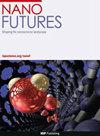肿瘤微环境和氧化还原反应性纳米载体介导的顺铂共给药系统的构建用于胰腺癌癌症的有效化疗
IF 2.5
4区 材料科学
Q3 MATERIALS SCIENCE, MULTIDISCIPLINARY
引用次数: 1
摘要
癌症是一种死亡率较高的恶性肿瘤。肿瘤组织中丰富的基质是药物渗透和肿瘤杀伤的主要屏障。基于顺铂和顺铂的纳米递送系统被广泛用作化疗剂。然而,副作用和不能深入渗透肿瘤组织限制了其在临床上的应用。透明质酸是肿瘤组织中细胞外基质的重要成分,有可能成为肿瘤基质降解的靶点。因此,纳米载体介导的顺铂共递送系统BPEI SS Pt/HAase@CaP构建了由透明质酸酶(HAase)和聚合物-顺铂偶联物BPEI-SS-Pt通过二硫键与支链聚乙烯亚胺(BPEI)形成的复合物。在BPEI SS Pt和HAase共递送系统的构建中,引入无定形磷酸钙以获得HAase的肿瘤微环境响应性释放。优化后的BPEI SS Pt的粒径/HAase@CaP纳米配合物为143±14nm。在肿瘤微环境中,BPEI SS Pt/HAase@CaP纳米复合物能够释放HAase以降解肿瘤基质中的透明质酸。组织化学和荧光标记结果表明,BPEI SS Pt在体内降解透明质酸/HAase@CaP并且与没有负载HAase的BPEI SS Pt相比,纳米载体介导的BPEI SS-Pt可以容易地穿过疏松的基质并更深入地穿透肿瘤组织。当它们被吸收到肿瘤细胞中,并在细胞内环境中对高谷胱甘肽产生反应以释放顺铂时,获得了对胰腺癌症更有效的化疗。与游离顺铂或BPEI SS Pt组相比/HAase@CaP纳米复合物在体内获得了最佳的抗肿瘤效果,有望在临床上应用顺铂对癌症进行有效的化疗。本文章由计算机程序翻译,如有差异,请以英文原文为准。
Construction of tumor microenvironment and redox responsive nanocarrier-mediated cisplatin co-delivery system for effective chemotherapy to pancreatic cancer
Pancreatic cancer is a malignant tumor with a high mortality rate. The rich stroma in tumor tissue is a major barrier to drug penetration and tumor killing. Cisplatin and cisplatin-based nano-delivery systems are widely used as chemotherapeutic agents. However, the side effects and the inability of permeating tumor tissue in depth have limited their application in the clinic. Hyaluronan is an important component of the extracellular matrix in the tumor tissue and has the potential to be targeted for tumor stroma degradation. Therefore, a nanocarrier-mediated cisplatin co-delivery system BPEI-SS-Pt/HAase@CaP consisting of hyaluronidase (HAase) and polymer-cisplatin conjugate BPEI-SS-Pt through disulfide bonding to branched polyethyleneimine (BPEI) was constructed. In the construction of the co-delivery system of BPEI-SS-Pt and HAase, amorphous calcium phosphate is introduced to obtain the tumor microenvironment responsive release of HAase. The particle size of optimized BPEI-SS-Pt/HAase@CaP nano-complexes is 143 ± 14 nm. In the tumor microenvironment, BPEI-SS-Pt/HAase@CaP nano-complexes were able to release HAase to degrade the hyaluronan in the tumor stroma. The results of histochemical and fluorescent labeling showed that hyaluronan was degraded in vivo by BPEI-SS-Pt/HAase@CaP and the nanocarrier-mediated BPEI-SS-Pt can be easily across the loosened stroma and penetrated the tumor tissue more deeply compared with BPEI-SS-Pt without loading HAase. When they were uptaken into tumor cells and responded to high glutathione in the intracellular environment to release cisplatin, more effective chemotherapy to pancreatic cancer was obtained. Compared with the free cisplatin or BPEI-SS-Pt group, BPEI-SS-Pt/HAase@CaP nano-complexes achieved the best antitumor effect in vivo, promising the future clinic use of cisplatin for effective chemotherapy to pancreatic cancer.
求助全文
通过发布文献求助,成功后即可免费获取论文全文。
去求助
来源期刊

Nano Futures
Chemistry-General Chemistry
CiteScore
4.30
自引率
0.00%
发文量
35
期刊介绍:
Nano Futures mission is to reflect the diverse and multidisciplinary field of nanoscience and nanotechnology that now brings together researchers from across physics, chemistry, biomedicine, materials science, engineering and industry.
 求助内容:
求助内容: 应助结果提醒方式:
应助结果提醒方式:


